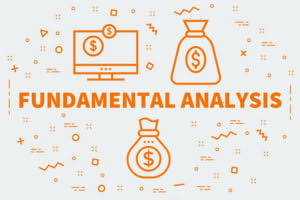Bond amortization schedule definition

Under the effective interest rate method the amount of interest expense in a given accounting period will correlate with the amount of a bond’s book value at the beginning of the accounting period. This https://mebe.bluecare.vn/future-value-fv-of-a-single-amount-definition-4/ means that as a bond’s book value increases, the amount of interest expense will increase. The present value (and the market value) of this bond depends on the market interest rate at the time of the calculation. The market interest rate is used to discount both the bond’s future interest payments and the principal payment occurring on the maturity date.

How accounting firms are overcoming challenges with AI
The strategic use of amortized municipal premium bond amortization table bonds can be a powerful approach for investors aiming to maximize their returns. By carefully considering factors such as interest rates, tax implications, and portfolio diversification, investors can harness the benefits of amortization to achieve a more favorable financial outcome. Whether for individual or institutional investors, the nuanced understanding of these financial instruments is essential for informed decision-making and optimal investment performance.

Assessing the Bonds Present Value and Discounting Cash Flows

A capital gain is the amount by which the current value of an asset exceeds the original purchase price. One option is for the investor to claim all of the capital gain as taxable income at the time of redemption, which results in a higher taxable amount at the time of redemption. This allows the investor to spread the capital gain over each payment interval, claiming a little bit of the capital gain along with each bond payment.
Ready to Calculate
One of the most important factors that affect the value of a bond is the interest rate. Interest rates are constantly changing in the market, and they have a direct impact on the price and yield of a bond. In this section, we will explore how interest rates affect bond value, and how bond amortization accounts for the change in bond value over time. We will also look at some of the different perspectives of bond investors, issuers, and accountants regarding interest rates and bond value.
- For investors, there can be tax implications for the amortization of bond premiums or discounts.
- Moreover, the tax advantages can significantly enhance the after-tax return on investment, which is a critical factor for tax-sensitive entities like pension funds and insurance companies.
- This adjustment ensures that, by the time the bond matures, its book value aligns with its face value.
- It is reasonable that a bond promising to pay 9% interest will sell for less than its face value when the market is expecting to earn 10% interest.
- The bond premium must be amortized over the life of the bond using the effective interest method or straight-line method.
It's a process that systematically reduces the cost basis of a bond over time, aligning interest expenses or income with the bond's yield to maturity. This section delves into real-world applications of amortization, illustrating its impact through various case studies. From the perspective of an investor, amortization can enhance yield performance and tax efficiency.
- Companies do not always issue bonds on the date they start to bear interest.
- Each year, a portion of the premium will be reduced, and the interest expense will be adjusted accordingly.
- This premium is not a loss but rather an additional cost that can have tax implications over the life of the bond.
- Bond amortization affects the carrying value of the bond, which is the amount that the bond issuer owes to the bondholder at any given time.
- Let’s assume that on January 1, 2024 a corporation issues a 9% $100,000 bond at its face amount.
- This is done by gradually transferring the premium from the balance sheet to the income statement as an interest expense.
Bond discount amortization schedule
The accounting treatment for Interest paid and bond premium amortized will remain the same, irrespective of the method used for amortization. For the remaining 7 periods, we can use the same structure presented above to calculate the amortizable bond premium. It can be seen from the above example that a bond purchased at a premium has a negative accrual, or in other words, the basis of the bond amortizes. To calculate the bond premium amortization each year, an investor must gather specific information about the bond. In summary, YTM is a dynamic measure that reflects a multitude of factors, including market conditions, inflation expectations, issuer credit risk, and more. It serves as a critical tool for investors to assess the true value of their bond investments in light of the prevailing economic climate.
- The journey of mastering the amortization schedule for bond analysis has been an enlightening experience thus far.
- The longer the maturity of the bond, the more sensitive it is to interest rate changes.
- The principal payment is also referred to as the bond’s maturity value or face value.
- Examining this facet from various perspectives, we will uncover key insights that will help you navigate this intricate landscape effectively.
- For investors, the schedule provides a clear picture of the bond's performance, including the rate at which the premium is amortized and the corresponding adjustment to the bond's yield.
- Understanding the factors influencing bond premium can help investors make informed decisions and assess the attractiveness of different bond offerings.
This complexity makes YTM a valuable tool for comparing bonds with different maturities Outsource Invoicing and coupon rates. Investing in premium municipal bonds can be a strategic move for investors seeking to balance risk and return while aiming for tax-efficient income. These bonds, often issued by local or state governments, are sold at a premium above their face value due to their higher coupon rate compared to the prevailing market interest rates. The allure of premium municipal bonds lies in their potential to provide a steady stream of income that is often exempt from federal, and in some cases, state and local taxes.
Constructing the Amortization Schedule: Principal and Interest Payments
By smoothing out the payments of the bond's premium, it ensures that the income from bonds is reported in a manner that reflects the economic reality of the investment. Whether an investor or an issuer, grasping this concept is essential for accurate financial planning and reporting. Premium amortization is a critical concept for long-term investors, particularly those who invest in municipal bonds. When an investor purchases a bond at a premium, that is, for a price above its par value, they are essentially paying extra for the bond's favorable interest rate compared to current market rates. Over time, this premium is gradually expensed or "amortized," which can have significant implications for an investor's portfolio. Notice that the effect of this journal is to post the interest calculated in the bond amortization schedule (14,880) to the interest expense account.


